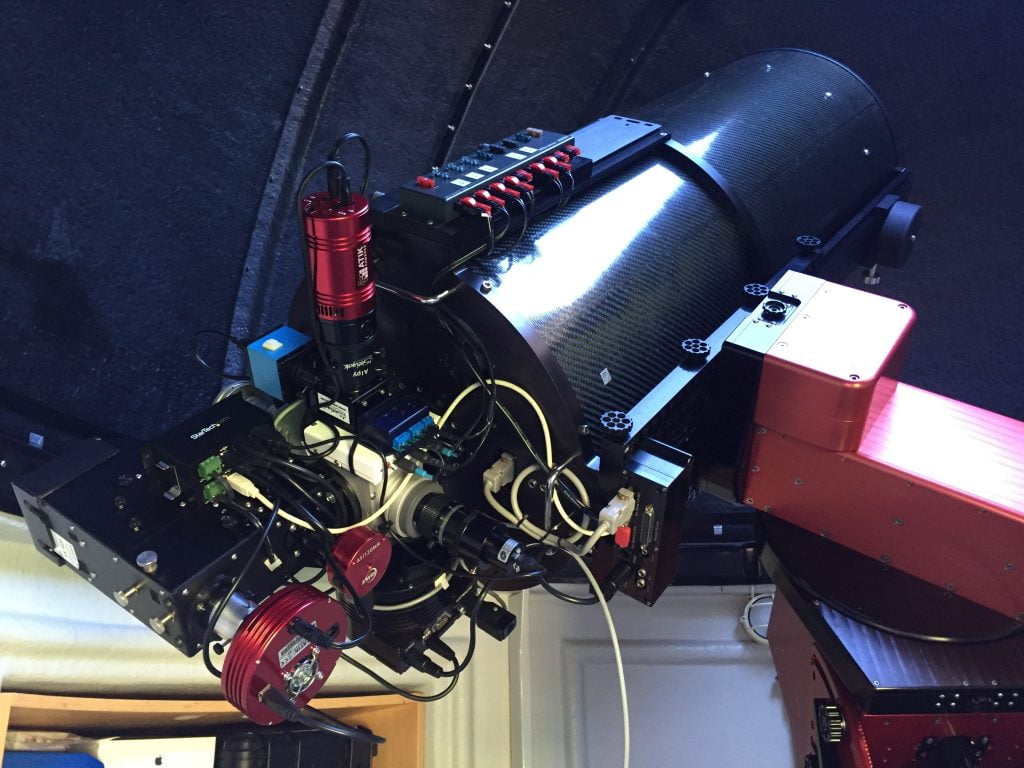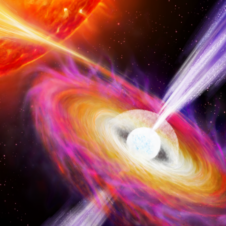In a typical year, there are predicted to be around 50 novae—nuclear explosions on the surface of white dwarf stars—in our galaxy. Only a dozen or so are actually discovered each year, and some of these are so bright and powerful, they exceed the scale of scientific explanation.
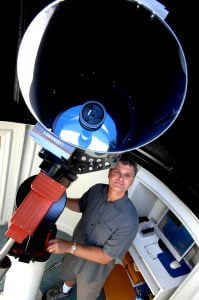
Paul’s “Backyard” telescope equipped with, among other things, a low resolution spectrograph. Credit: Paul Luckas.
With the help of ICRAR Astronomer Paul Luckas, researchers at Michigan State University (MSU) in the United States have observed a super-luminous nova in unparalleled detail and proven a theory that explains the phenomena. The results, published in the current issue of Nature Astronomy, indicate that powerful shockwaves amplify the explosions beyond any traditional scale for nuclear explosions.
“Astronomers have long thought the energy from novae was dominated by the white dwarf, controlling how much light and energy are emitted,” said Laura Chomiuk, MSU astronomer and study co-author.
“What we discovered, however, was a completely different source of energy—shockwaves that can dominate the entire explosion.”
As the explosion begins, a cooler, slower wave of gaseous material is ejected, but right behind it is a hotter, faster wave that catches up, collides and causes a shockwave that results in a spectacular explosion of heat and light.
The stellar event that ultimately confirmed this theory was detected in late October last year. Paul Luckas from The University of Western Australia swung into action using a backyard telescope equipped with a spectrograph—an instrument that separates incoming light into a spectrum so that individual wavelengths can be measured.
“No one knew if it was a nova at the time, so it was important to get a spectrum as quickly as possible to verify what it actually was,” said Luckas.
“It was very low down in the western sky so I thought there would be few, if any, professional telescopes able to target the object given its challenging location.”
Luckas reported his observations via an “Astronomer’s Telegram”, alerting the global research community and confirming the outburst as a nova in the early stages of the event. This triggered the MSU research team to investigate further using NASA’s Fermi Gamma-ray Space Telescope, while Luckas continued to take optical spectra of the nova until it disappeared into the glare of the Sun over the following two weeks
The spectra were made available through the French ARAS spectroscopy database, where they were accessed and downloaded by the MSU team for analysis. The unequivocal results, when expressed through a graph, display a pulsating line of energy resembling a “galactic heartbeat”.
With the help of Luckas’ spectra, the MSU team were able to make this discovery and confirm the theory. “It’s a great example of astronomers around the world using a variety of techniques and working together to better understand the Universe we live in,” said Luckas.
Now that the theory has been proven, astronomers can use novae to better understand other super-charged explosions, like those that mark the death of massive stars in galaxies far away.
As well as astronomers from Michigan State University and Paul Luckas from The University of Western Australia node of the International Centre for radio Astronomy Research (ICRAR), researchers from Columbia University, Tartu Observatory (Estonia), the University of Pittsburgh, Carnegie Observatories, Ohio State University, Universidad Diego Portales (Chile), the Millennium Institute of Astrophysics (Chile), the American Association of Variable Star Observers and the Variable Star Observer’s League in Japan were also involved in this research.
PUBLICATION DETAILS
‘A Nova Outburst Powered by Shocks’, published in Nature Astronomy on September 4th, 2017.
Click here for the research paper
MORE INFORMATION
ICRAR
The International Centre for Radio Astronomy Research, or ICRAR, is a joint venture between Curtin University and The University of Western Australia with support and funding from the State Government of Western Australia.
CONTACT INFORMATION
Paul Luckas (ICRAR-UWA)
Ph: +61 401 648 039 E: Paul.Luckas@icrar.org
Pete Wheeler (Media Contact, ICRAR)
Ph: +61 423 982 018 E: Pete.Wheeler@icrar.org
MULTIMEDIA
Image: Paul Luckas and his “backyard” telescope
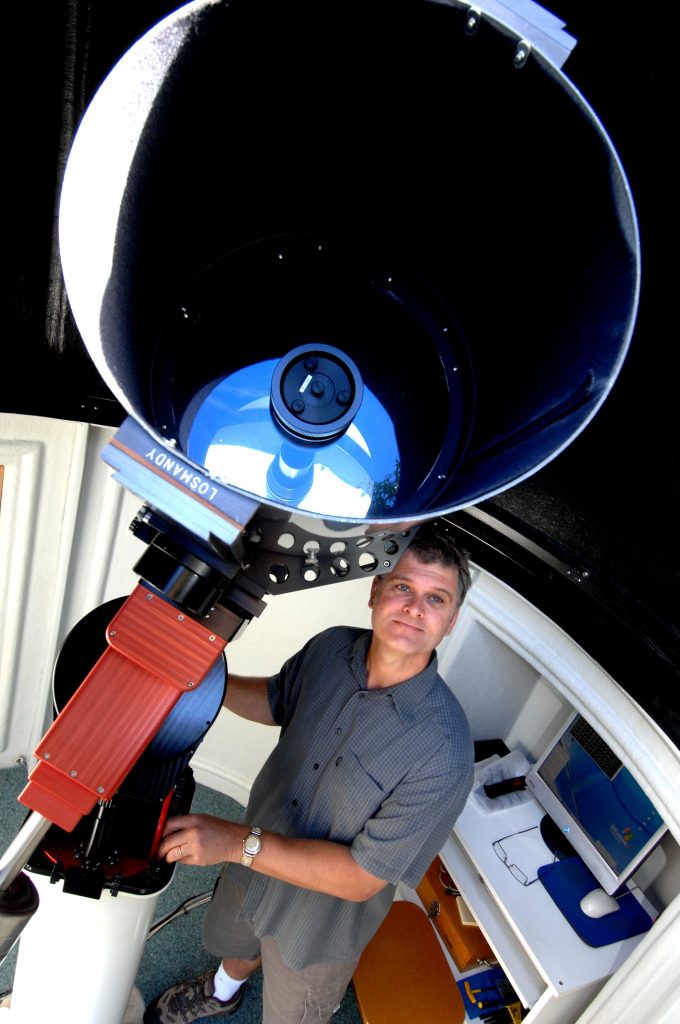
Paul’s “Backyard” telescope equipped with, among other things, a low resolution spectrograph. Credit: Paul Luckas.
Image: Artist’s impression of a Nova
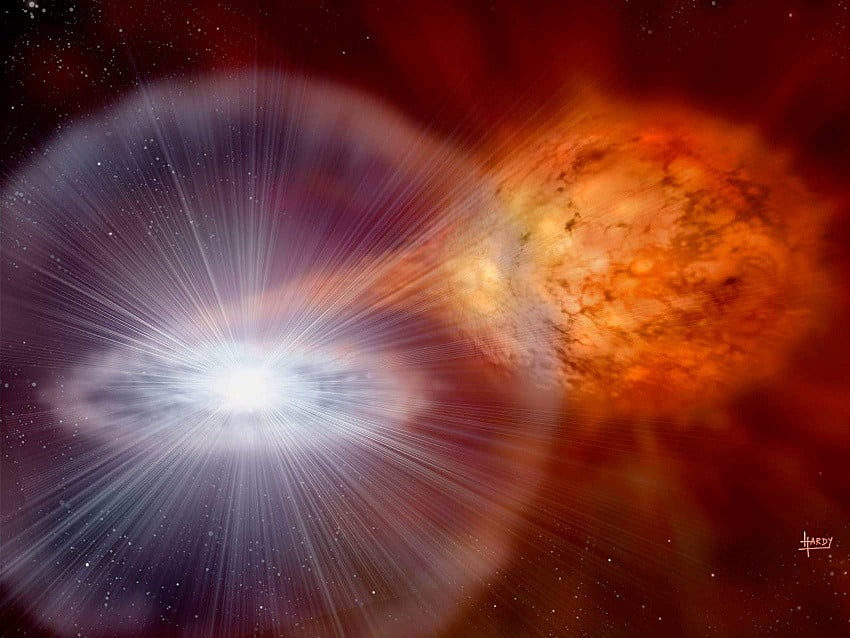
An artist’s impression of a binary system similar to the one Nova ASASSN-16ma belongs to. Image credit: David A. Hardy / PPARC.
Image: Nova Spectrum
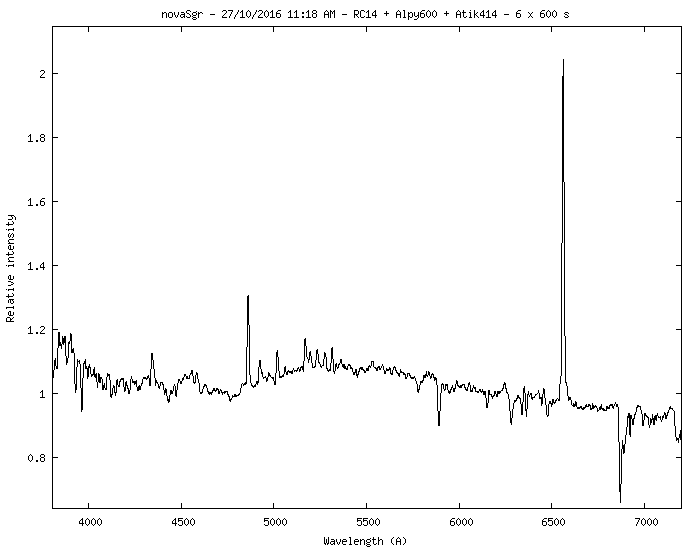
The spectrum Paul observed showing the typical emission features of a nova in outburst. Credit: ICRAR.
Image: A ‘negative’ image showing the Nova
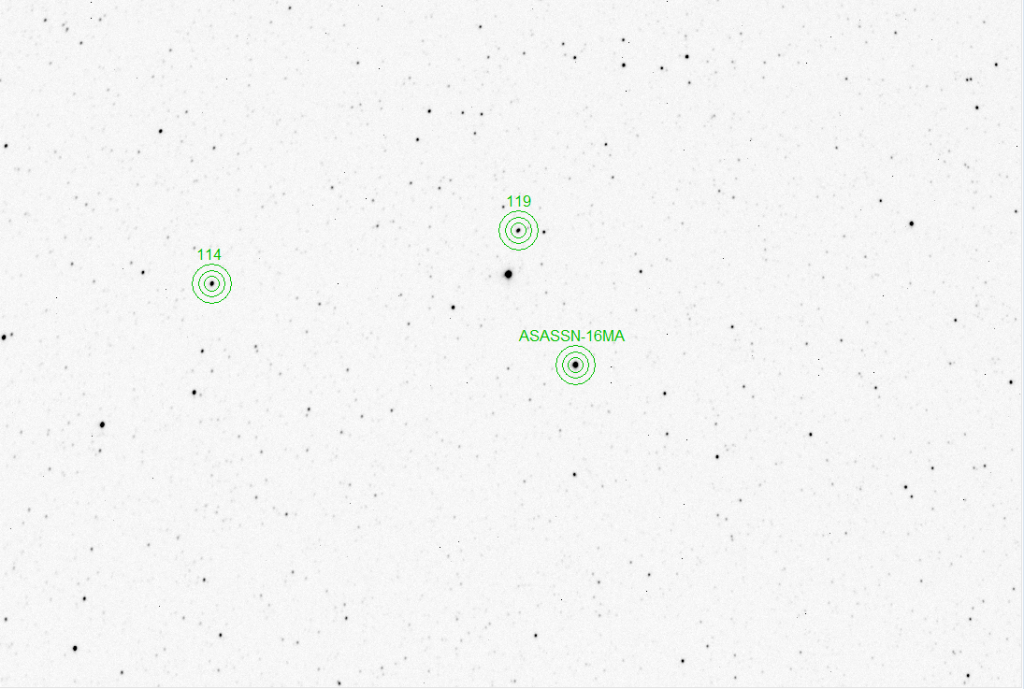
A ‘negative’ image of the Nova taken by Paul Luckas. The name “Nova” comes from the Latin “Nova Stella” meaning “new star”. Credit: ICRAR.
Image: The “Backyard” Telescope
